From 1883 to 1889, the county fair was held in Alderson and was named the Greenbrier Valley Industrial Exposition. This Fair was the first noted exhibition where demonstrations and displays of technology were shown along with the agricultural displays. Recent advances in farming equipment and house-wares were popular attractions for Fairgoers of all ages. The Fairgrounds were located just north of Alderson on property later owned by Camp Greenbrier.
When the Fair returned to Lewisburg in 1891, it was conducted on property that accommodated many of the activities. An announcement in the Rules & Premiums book for that year describes the following; ‘The Grand Stand is so situated as to completely overlook the Race Course, and from any position in it the gazer can see each stroke of the hoof of the speeding courser from the start to the finish, and is capable of seating 1200 persons. A splendid track, one-half mile in length. Everything is fresh, new and inviting. Ample provisions have been made for the safety and sheltering of stock. Capacious cisterns will furnish an abundant supply of water, and all that tends to the comfort of man and beast will be supplied. The grounds, situated one-fourth mile south of Lewisburg and three and one-half miles north of Ronceverte, Chesapeake & Ohio Railroad, affords facilities to persons living at a distance to visit the Exposition and is easily accessible to all’.
Entertainment during The Industrial Expositions consisted of flat racing, harness racing and novelty contests for visitors such as Wheelbarrow Races, Potato Races, and Greased Pole Climbing! Entries consisted of Agricultural Implements (Department XI) in which farming machinery including a turnip drill, root slicer, fanning mill, hillside plow, road scraper and a gang plow were displayed.
Throughout the early Fairs, individuals and businesses offered special prizes for specific contests or classes. Money was offered as premiums for displays such as: The Best Saddle Colt, halter broke, under one year old – $2.50 by Jas. T. Rucker; The Best Loaf of Bread – $2.50 by Silas B. Mason; The Best Drilled Soldier in the West Virginia National Guard – $5 by J.W. A. Ford; The Best Spread Knit, by a girl 14 years or younger – $2.50 offered by John D. Johnston.

Early successes and failures of Fairs in Greenbrier County set the stage for the formation of an annual event that would be more popular and successful than any of its predecessors. Although there are no records to show the existence of an annual event during the early years of the 1900’s, small community fairs, which consisted of neighbors meeting to display their goods, continued throughout the period.
One of the highlights of attending the Fair was the family picnic. The first notation of picnics on the Fairgrounds was in the 1896 Exhibitor’s Guide that had a everything closing from 12:30 pm until 1:00 pm for dinner. This tradition, which had existed from the earliest fairs, was a stopping point for everyone to relax and regroup before continuing their exciting day. Preparing for the picnic was usually done the day before attending the Fair and the meal almost always consisted of the same basic foods; including fried chicken, potato salad, fresh tomatoes, and other fresh garden vegetables.

